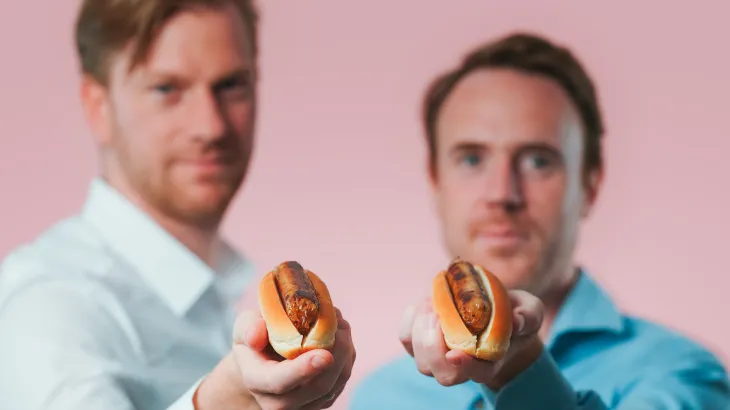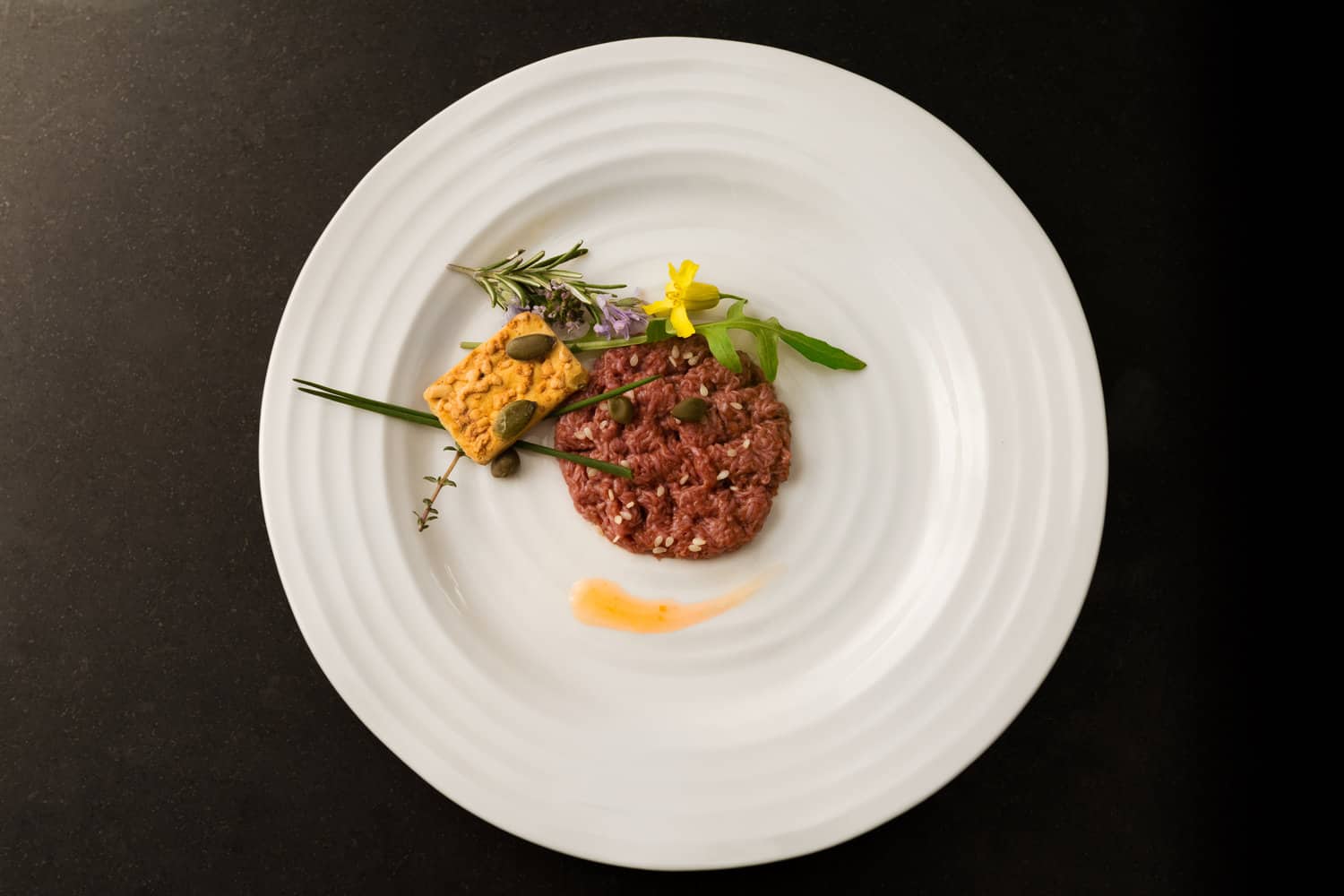
Meat is an integral part of most traditional cuisines in Europe. From traditional Hungarian goulash and Swedish meatballs to German schnitzel and Mediterranean fish dishes such as French bouillabaisse and Portuguese bacalhau. You might have a completely different dish from your childhood that you’re thinking about now.
But the world cannot keep up with our increasing meat consumption. Most people are familiar with the decreasing levels of fish in oceans due to overfishing and the high levels of water and land needed for traditional meat production – which accounts for nearly 60% of all greenhouse gases from food production. If we want to continue eating meat in the future, we need to do something about the environmental impact of our dietary habits.
That’s where cultivated meat comes into the picture. Researchers have found a way to create real meat in laboratory conditions so that no actual animals are harmed and the environment is less damaged than today. It seems great, but there is still a way to go before you can order steak from a lab at your favorite restaurant.
This is meat grown in a lab. A small sample of cells is taken from an animal and placed in a bioreactor, where it is fed nutrients and vitamins and receives fresh air to grow into fully-fledged muscles and fat.
Yes, it is real meat.
It could be healthier than conventional meat, as it can be made to contain less saturated fat. The meat can also be made without antibiotics, which helps combat antibiotic-resistant bacteria.
It is more environmentally friendly. Cultivated meat requires less energy and water than conventional meat in its production. It could also emit less CO2, depending on whether the cultivation process uses renewable energy.
Once production is scaled up, it could contribute towards meeting the future demand for food. This could also increase food security.
In Singapore, cultivated chicken from Eat Just has been approved for sale. In Europe, however, cultivated meat is still far from entering the menu. But new contenders are entering the market, and we are getting closer to that point each year.
A key ingredient for future food security
Cultivated meat is known under many names: cultured meat, synthetic meat, slaughter-free meat, and lab-grown meat, to name a few. It promises a healthier, more sustainably- produced meat free from animal cruelty.
When it reaches full-scale production, cultivated meat could play an essential role in ensuring food security in the future. “The ingredients for the nutrition medium could be transported longer distances as a dry powder, so agricultural land is not necessarily needed close to the production facilities,” sustainable food systems researcher Hanna Tuomisto writes in an article from 2019. This depends, however, on whether customers are willing to eat the food.

Cultivated meat versus conventional meat
We can get a better picture of the need for cultivated meat by looking at some numbers. Well, several numbers. Today, global food production is responsible for a quarter of the world’s greenhouse gas emissions, and livestock production comprises 60% of these emissions. Agriculture and livestock together are responsible for 85% of nitrogen and 90% of phosphorus emissions.
On top of that, the two together make up 80% of land-use change, 70% of water use, and cause 80% of the world’s biodiversity loss. That is today, and the world’s meat consumption is expected to increase even more. Lab-grown meat could help lift the environmental burden without forcing everyone to turn vegetarian. It requires significantly less land and water than conventional meat in its production, which would make it more desirable.
Cultivated meat could also be a sustainable alternative to conventional meat. But it depends on the energy source used in its production. It needs a lot of energy to produce ingredients for the growth medium and run the bioreactor in which the meat grows. Over the last decade, various researchers have calculated the energy needed to make cultivated meat. The results vary from as little as 25-32 MJ/kg up to 147-264 MJ/kg of cultivated meat produced. However, according to scientists Lynch and Pierrehumbert, if the energy comes from non-renewable sources, CO2 emissions from lab-grown meat could be much higher in the long term than conventional meat. This is especially seen in comparison to conventionally farmed pork and chicken.
How it is made
In 2013, the world saw the potential of cultivated meat when scientist Mark Post fried the first lab-grown hamburger on live TV. His company, Mosa Meat, established in 2016, has continued to develop lab-grown meat with several other start-ups worldwide.
“To make muscle tissue with the right structure and flavor, we put the muscle cells onto a gel scaffold and, with this structural support, the muscle cells start to naturally contract, put on bulk, and form into muscle fibers. When we layer all the muscle fibers together (about 20,000 fibers for one hamburger patty) and add the fat – we have meat. The meat can then be processed using standard food technologies. For example, we could put it through a grinder to make ground beef. Because it is real meat, it has the same properties we’re used to from conventional meat. For example, it ‘bleeds’ like conventional meat and sizzles and browns when you cook it,” says Tait.
Any form of meat
Theoretically, cultivated meat can be made from any animal with stem cells that can turn into fat and muscle cells. Among the nearly 30 cultivated meat companies in Europe – Israel and Turkey included – a range of various types of meat are being developed, from beef and other red meat products to chicken filets and duck. French-based Gourmey has even taken it upon itself to create an animal-friendly version of the popular yet highly controversial foie gras. The company sent the first taste tests to selected people in 2021 with great approval rates.
Cultivated seafood is a more novel innovation than other forms of meat. Most cultivated seafood start-ups in Europe were founded only in recent years. “Most meat and fish cultivating technologies follow a similar general product roadmap. There are, of course, technological differences within the same category and between the two categories,” says Daphna Heffetz, CEO of Wanda Fish. This start-up produces a variety of fish filets. The limits to the types of cultivated seafood that can be made are still unknown, Heffetz says.
Israel is among the forerunners of cultivated meat innovation. Heffetz mentions some possible reasons for this. High-tech start-ups can quickly establish their companies through technological hubs supported by the Israeli Innovation Authority. “When there is a new, high-potential opportunity, specifically in hi-tech and biotech, Israelis are often the first to jump into the water,” Heffetz predicts. And the companies can feed off each others’ success: “Some of the Israeli cultivated meat companies are advancing rapidly, creating a successful model for others to join.”
Time to scale up the industry
In 2019, Mosa Meat overcame a significant challenge within the cultivated meat landscape by developing an animal-free alternative to fetal bovine growth serum. Their new alternative is considered more sustainable, ethical, and scalable.
The next challenge is to scale up the technology so that meat can be produced in large quantities affordable to the average meat eater. The burger from 2013 cost €250,000, an unattainable price tag for anyone but a small number of wealthy people, primarily because only one single burger was made. “We’ve reduced the cost of some parts of the process, for example, by reducing manual labor through automation and eliminating costly components of the medium. But prices will decrease significantly when we scale up,” says Mosa Meat spokesperson Hannah Tait.
With its pilot production facility in Maastricht, Netherlands, Mosa Meat has begun its production scale-up. “We ultimately compare our industry’s scaling ambitions to the production capacity of other large-scale food products like lysine, Quorn, baker’s yeast, potable ethanol, citric acid, and the wine industry,” says Tait.
Not yet for European markets
Europeans who want to eat cultivated meat today must book a flight to the other side of the world. Cultivated chicken from Eat Just has only been available in the Singaporean market since 2020. But before you can fill your shopping basket with lab-grown meats here in Europe, the products need to be approved by the European Food Safety Authority (EFSA) under their novel foods act. This means the meat product cannot:
- Present a danger to the consumer
- Mislead the consumer
- Differ so much from the food or food ingredient it replaces that everyday consumption would be nutritionally disadvantageous for the consumer
Edward Bray, media relations officer at EFSA, explains some of the obstacles cultivated meat could face as it seeks to be commercially approved for the EU market: “These cells need to be added to the medium, and there’s no immune system in the bioreactor, so a key question is how the reactors are kept free from microbial contamination.” This includes checking for heavy metals, harmful microbes, and the allergenicity of the product.

Tait explains: “Our process starts completely sterile in a clean and controlled environment, and in a closed system, it remains sterile until harvested.” Today, bioreactors are used in other large-scale industries with no danger of microbial contamination. For example, large-scale systems with mammalian cells have already run successfully without antibiotics in the pharmaceutical industry.
First restaurants, then grocery stores
EFSA has a deadline of nine months to complete an assessment of novel foods seeking to enter the European market. As of late March 2022, they had not yet received any applications for cultivated meat. But once the first applications have been received and approved, it will likely still take some time before large-scale production occurs. “I think limited commercialization will start via restaurants, and it will take a while until it reaches grocery stores,” says Heffetz.
We will have to stick with conventional meat or its plant-based alternatives for a little longer. But companies believe we will see the first cultivated meat options rollout on the European market this year.
The only question left is: Will you try it yourself?
Support us!
Innovation Origins is an independent news platform that has an unconventional revenue model. We are sponsored by companies that support our mission: to spread the story of innovation. Read more.
At Innovation Origins, you can always read our articles for free. We want to keep it that way. Have you enjoyed our articles so much that you want support our mission? Then use the button below:











